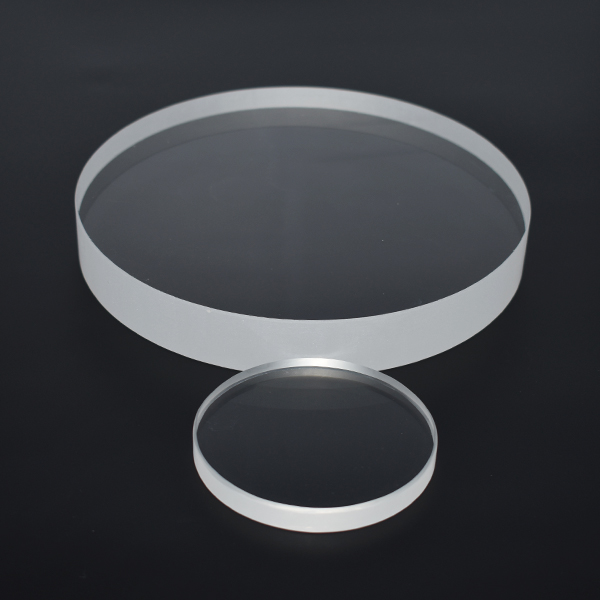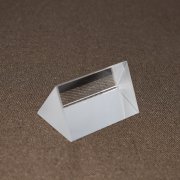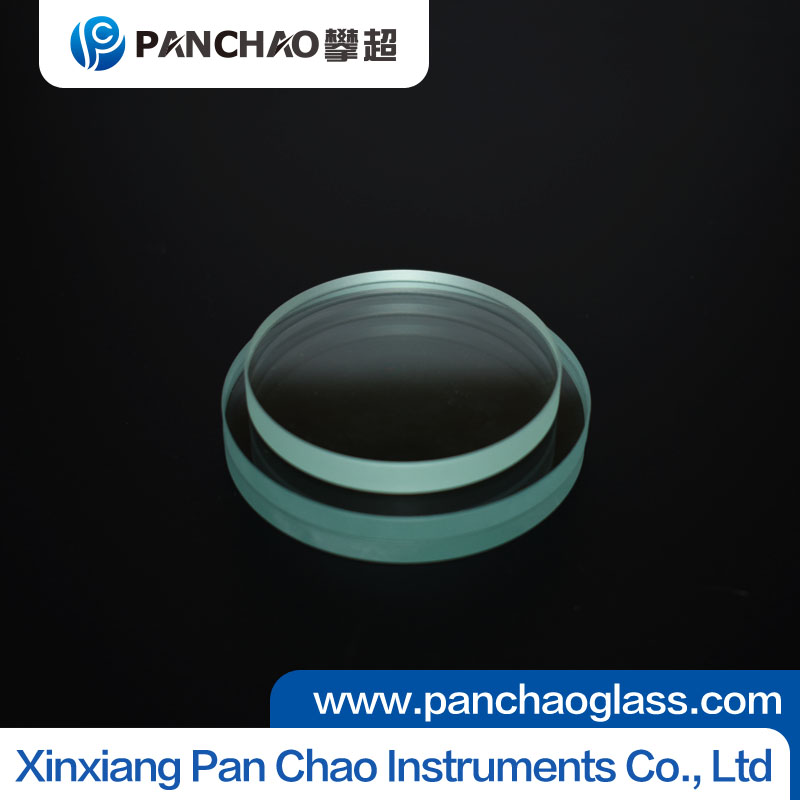
quartz tablets glass
PCHAO brand industrial sight glass give you professional custom!
Website:www.panchaoglass.com
Address:Room 1624, Jing Ye Gong Yuan Guo Ji, Jin Sui road and New Second Street intersection, Xin Xiang city, Henan Province, China
Phone: +8613569413718
Quartz tablets, usually by the quartz smelting and cutting and grinding, the silica content of up to 99.99% or more. Hardness for the Mo-seven, with high temperature, low coefficient of thermal expansion, thermal shock resistance and good electrical insulation and other characteristics. Usually a colorless transparent class, visible light transmittance of more than 85%.
Optical performance
The optical properties of the quartz film have its unique, it can be through the far ultraviolet, is the best of all through the UV material, but also through the visible light can be near infrared spectroscopy. As the quartz glass high temperature, thermal expansion coefficient is very small, good chemical stability, bubbles, stripes, uniformity, birefringence can be comparable with the general optical glass, so it is working in a variety of bad occasions with high stability optical coefficient Indispensable optical material.
According to its optical performance can be divided into three categories:
1. Far UV optical quartz glass JGS1
In the ultraviolet and visible spectral range of transparent; in the 185-250nm band within the absorption zone; in the 2600-2800nm band within the strong absorption band; non-luminous, light radiation stability.
2. UV optical quartz glass JGS2
In the ultraviolet and visible spectral range of transparent; in the 200-250nm band within the band without absorption; in the 2600-2800nm band within the strong absorption zone; non-luminous, light radiation stability.
Infrared optical quartz glass JGS3
Visible in the visible and infrared spectral ranges; no significant absorption band in the 2600-2800 nm band.
Compared with ordinary silicate glass, transparent quartz glass in the entire wavelength of the head through the excellent performance. In the infrared region, the spectrum is larger than that of ordinary glass. In the visible region, the transmittance of quartz glass is relatively high. In the ultraviolet spectral region, especially in the short-wave ultraviolet region, the spectrum is much better than other glasses
The spectral transmittance is affected by three factors: reflection, scattering and absorption. Quartz glass reflection is generally 8%, larger UV area, infrared area smaller. So the permeability of quartz glass is generally not more than 92%. Quartz glass scattering is relatively small, generally can be ignored. Spectral absorption and impurity content of quartz glass are closely related to the production process. The transmittance in the range of less than 200 nanometers is representative of the amount of metal impurity; the absorption of 240 nm represents the number of hypoxic structures; The absorption of the band is due to the presence of transition metal ions, 2730 sodium absorption is the absorption peak of hydroxyl, can be used to calculate the hydroxyl content.
(C, ppm) T: Thickness (mm) Ta (t) Thickness (mm) Ta: Tc Thickness (C, ppm) T: Thickness (mm) Ta : Transmittance at wavelength of 2600 nm: Tb: transmittance at 2730 nm m wavelength B: China national standard formula: C = 96.5 / d * LG10 (Ia / I) mm-1 C: hydroxyl content (ppm) (Mm) Spectral transmittance: Thickness 1 mm) Other thickness Spectral transmittance (mm) Thickness (cm) Ia: 2730 Centimeter to baseline distance (mm) I: 2730 Distance from sodium absorption peak to zero line (mm) Spectral transmittance: Thickness 1 mm) Other thickness Spectral transmittance Derived by the formula: T = (1-R) 2 e -at T: transmittance R: single reflection loss. E: natural logarithmic base. T: Thickness (cm) Spectral transmittance wavelength nm
If you are interested in the Quartz glass or need to consult, please click on our online customer service, or call us. Pan Chao, customized different quality specifications of the glass.
Pan Chao special industrial glass, tailored for your different quality of the glass.
Welcome sending your inquiry: Phone : +86 13569413718 Email: info@panchaoglass.com
Optical performance
The optical properties of the quartz film have its unique, it can be through the far ultraviolet, is the best of all through the UV material, but also through the visible light can be near infrared spectroscopy. As the quartz glass high temperature, thermal expansion coefficient is very small, good chemical stability, bubbles, stripes, uniformity, birefringence can be comparable with the general optical glass, so it is working in a variety of bad occasions with high stability optical coefficient Indispensable optical material.
According to its optical performance can be divided into three categories:
1. Far UV optical quartz glass JGS1
In the ultraviolet and visible spectral range of transparent; in the 185-250nm band within the absorption zone; in the 2600-2800nm band within the strong absorption band; non-luminous, light radiation stability.
2. UV optical quartz glass JGS2
In the ultraviolet and visible spectral range of transparent; in the 200-250nm band within the band without absorption; in the 2600-2800nm band within the strong absorption zone; non-luminous, light radiation stability.
Infrared optical quartz glass JGS3
Visible in the visible and infrared spectral ranges; no significant absorption band in the 2600-2800 nm band.
Compared with ordinary silicate glass, transparent quartz glass in the entire wavelength of the head through the excellent performance. In the infrared region, the spectrum is larger than that of ordinary glass. In the visible region, the transmittance of quartz glass is relatively high. In the ultraviolet spectral region, especially in the short-wave ultraviolet region, the spectrum is much better than other glasses
The spectral transmittance is affected by three factors: reflection, scattering and absorption. Quartz glass reflection is generally 8%, larger UV area, infrared area smaller. So the permeability of quartz glass is generally not more than 92%. Quartz glass scattering is relatively small, generally can be ignored. Spectral absorption and impurity content of quartz glass are closely related to the production process. The transmittance in the range of less than 200 nanometers is representative of the amount of metal impurity; the absorption of 240 nm represents the number of hypoxic structures; The absorption of the band is due to the presence of transition metal ions, 2730 sodium absorption is the absorption peak of hydroxyl, can be used to calculate the hydroxyl content.
(C, ppm) T: Thickness (mm) Ta (t) Thickness (mm) Ta: Tc Thickness (C, ppm) T: Thickness (mm) Ta : Transmittance at wavelength of 2600 nm: Tb: transmittance at 2730 nm m wavelength B: China national standard formula: C = 96.5 / d * LG10 (Ia / I) mm-1 C: hydroxyl content (ppm) (Mm) Spectral transmittance: Thickness 1 mm) Other thickness Spectral transmittance (mm) Thickness (cm) Ia: 2730 Centimeter to baseline distance (mm) I: 2730 Distance from sodium absorption peak to zero line (mm) Spectral transmittance: Thickness 1 mm) Other thickness Spectral transmittance Derived by the formula: T = (1-R) 2 e -at T: transmittance R: single reflection loss. E: natural logarithmic base. T: Thickness (cm) Spectral transmittance wavelength nm
If you are interested in the Quartz glass or need to consult, please click on our online customer service, or call us. Pan Chao, customized different quality specifications of the glass.
Pan Chao special industrial glass, tailored for your different quality of the glass.
Welcome sending your inquiry: Phone : +86 13569413718 Email: info@panchaoglass.com
Related articles
Products
acrylic display center
Contact Us

Xinxiang Pan Chao Instruments Co., Ltd.
Tel: +86 13343800331
Contact person:Carrie Niu
Fax: 0373 303 0331
Email:sales@panchaoglass.com






